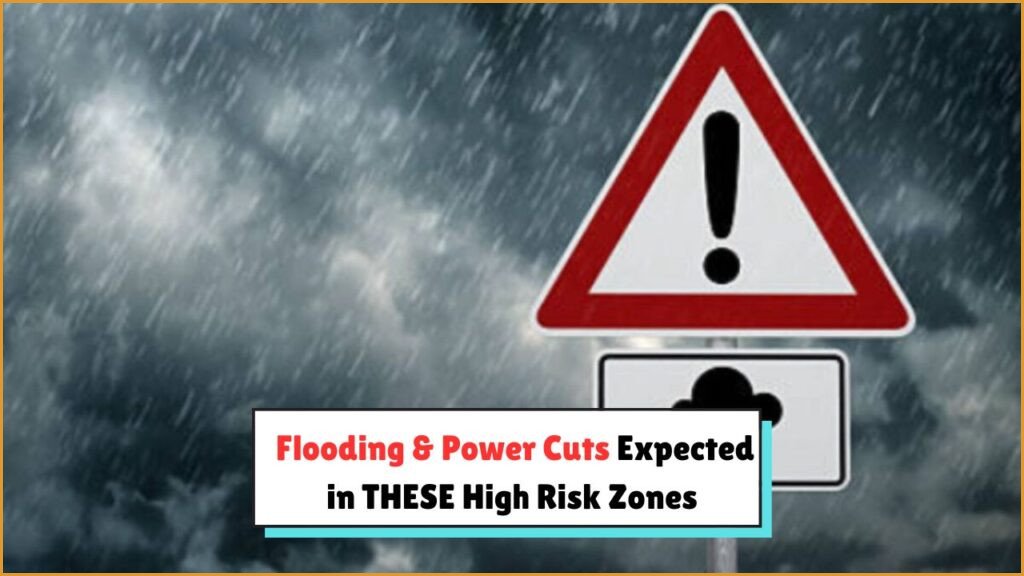Severe Storms Unleash Torrential Rains and Winds Across South Africa: In recent days, South Africa has witnessed an extraordinary display of nature’s fury as severe storms have swept across the nation, unleashing torrential rains and gusty winds. These storms have not only tested the resilience of communities but have also highlighted the urgent need for preparedness in the face of extreme weather events. From the coastal cities of Durban to the inland regions of Gauteng, the impact of these storms has been felt far and wide. Residents have been advised to stay vigilant, as meteorologists warn that the unpredictable weather patterns could persist, leading to potential flooding and disruption. As the country braces itself for the ongoing onslaught, it becomes imperative to understand the dynamics of these storms and the measures that can be taken to mitigate their effects.

Understanding the Meteorological Causes Behind South Africa’s Severe Storms
The recent severe storms in South Africa have been attributed to a combination of meteorological factors that have converged to create these intense weather conditions. One of the primary contributors is the presence of a low-pressure system that has lingered over the region, drawing in moist, warm air from the Indian Ocean. This influx of moisture has been a key driver in the formation of cumulonimbus clouds, which are notorious for producing heavy rainfall and severe thunderstorms. Additionally, the presence of a high-pressure system over the interior of the country has created a pressure gradient, intensifying the wind speeds and contributing to the storm’s ferocity. The interaction between these atmospheric pressure systems has led to the erratic weather patterns currently being experienced across the nation. As climate change continues to influence global weather systems, South Africa may see an increase in the frequency and intensity of such storms, necessitating enhanced forecasting and response strategies.
 SASSA Grant Increase for August Unveiled – Discover the Full List of New Amounts and Dates
SASSA Grant Increase for August Unveiled – Discover the Full List of New Amounts and Dates
Impact of Torrential Rains and Winds on South African Communities
The impact of the torrential rains and winds unleashed by these severe storms has been profound, affecting both urban and rural communities across South Africa. In urban areas, the heavy downpour has overwhelmed drainage systems, leading to flash floods that have inundated streets and homes. The resulting water damage has caused significant disruption to daily life, with businesses and schools forced to close temporarily. In rural regions, the strong winds have wreaked havoc on agricultural lands, damaging crops and infrastructure, and posing a threat to food security. Furthermore, the storms have led to power outages as strong winds have downed power lines, leaving many communities without electricity. Emergency services have been working tirelessly to provide relief and assistance to those affected, but the scale of the damage has highlighted the need for improved infrastructure and emergency preparedness in the face of such natural disasters.
Preparing for Future Storms: Lessons Learned from Recent Weather Events
The recent severe storms have underscored the importance of preparedness in mitigating the impacts of extreme weather events. One of the key lessons learned is the need for robust early warning systems that can provide timely alerts to communities at risk. This requires investment in meteorological technology and infrastructure that can accurately predict and monitor weather patterns. Additionally, public awareness campaigns are essential to educate residents on the steps they can take to protect themselves and their property during storms. This includes understanding evacuation routes, securing loose objects, and having emergency kits on hand. Local governments also play a critical role in enhancing resilience by implementing flood management strategies and strengthening building codes to withstand severe weather. By adopting a proactive approach, South Africa can better safeguard its communities against the growing threat of climate-related disasters.
Community Involvement and Governmental Response to Weather Crises
The response to the recent storms has highlighted the importance of community involvement and governmental action in managing weather-related crises. Local communities have shown remarkable resilience and solidarity, coming together to support one another in the face of adversity. Community-led initiatives, such as neighborhood watch groups and volunteer rescue teams, have been instrumental in providing immediate assistance to those in need. On the governmental front, coordinated efforts between national and local authorities have been crucial in deploying resources and organizing relief efforts. However, there is a growing recognition that more needs to be done to build long-term resilience. This includes investing in infrastructure improvements, such as upgrading stormwater drainage systems and reinforcing coastal defenses. Additionally, fostering partnerships between government agencies, private sector stakeholders, and non-profit organizations can enhance the country’s capacity to respond to and recover from severe weather events. By working collaboratively, South Africa can build a more resilient future in the face of climate change.
How can South Africa prepare for severe storms to minimize damage?
By securing loose objects and seeking shelter in safe areas.
What are the common impacts of severe storms on South Africa?
Flooding, power outages, property damage, and transportation disruptions.








